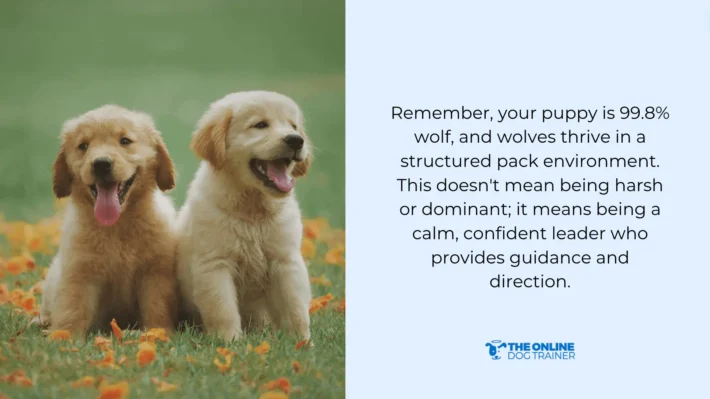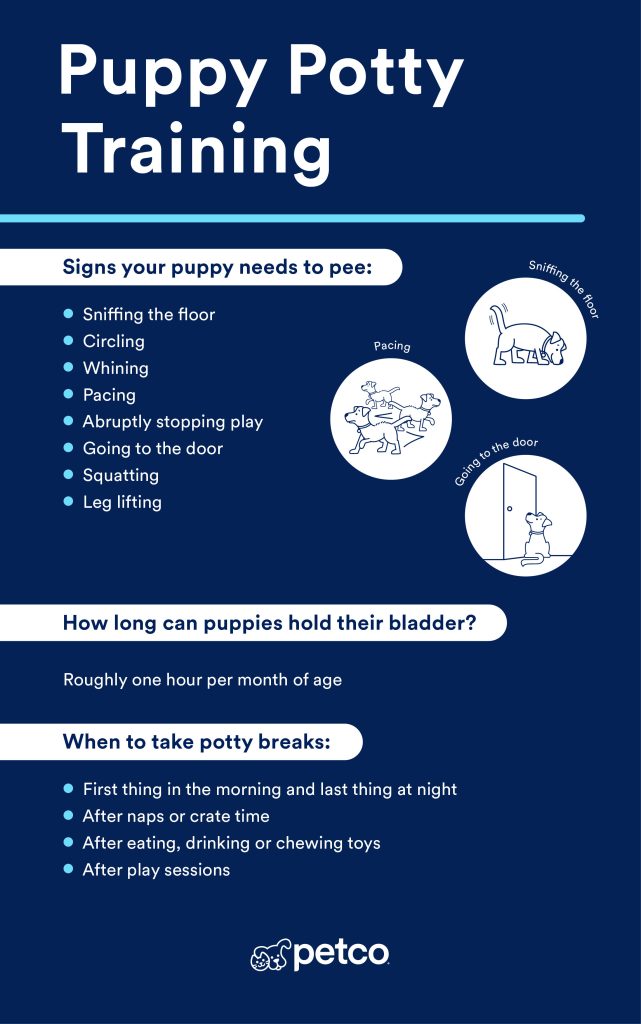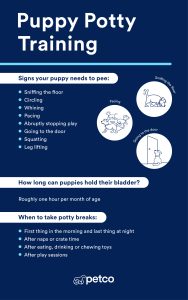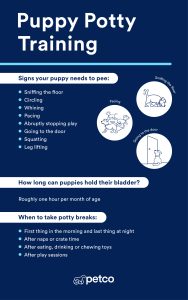Bringing a new puppy into your home is exciting, but training them can feel overwhelming. You want your puppy to grow into a happy, well-behaved dog, and the right training makes all the difference.
What if you could avoid common mistakes and speed up the learning process? In this post, you’ll discover simple, effective tips that make training easier for both you and your puppy. Keep reading to unlock the secrets that will help your furry friend listen, learn, and love you even more.
Choosing The Right Training Approach
Training a puppy takes patience and care. Picking the right approach helps your puppy learn better.
Every puppy is different. The training should fit your puppy’s personality and your lifestyle.
Positive Reinforcement Techniques
Positive reinforcement means rewarding good behavior. This makes your puppy want to repeat it.
Use treats, praise, or playtime to reward your puppy. This encourages them to listen and learn.
- Give treats right after good behavior
- Use a happy voice to praise your puppy
- Keep rewards small and frequent
- Avoid punishment or harsh words
Consistency In Commands
Use the same words and signals every time. This helps your puppy understand what you want.
All family members should use the same commands. Mixed messages can confuse your puppy.
- Choose simple commands like “sit” or “stay”
- Use clear hand signals along with words
- Practice commands regularly every day
- Be patient and repeat commands calmly
Setting Realistic Expectations
Puppies learn step by step. Don’t expect perfect behavior right away.
Short training sessions work best. Keep training fun and avoid stress for your puppy.
- Limit training to 5-10 minutes per session
- Focus on one skill before moving to the next
- Celebrate small successes along the way
- Understand that mistakes are normal
Basic Commands Every Puppy Should Know
Teaching your puppy basic commands helps build good habits early. These commands keep your puppy safe and happy.
Simple commands make communication easier between you and your puppy. Start training as soon as you bring your puppy home.
Sit And Stay
The “Sit” command helps your puppy learn to stay calm. “Stay” teaches patience and control.
- Hold a treat close to your puppy’s nose.
- Move the treat up, causing the puppy to sit.
- Say “Sit” and give the treat.
- Once sitting, say “Stay” and take a step back.
- If the puppy stays, reward with a treat.
Come When Called
This command keeps your puppy safe in busy or dangerous places. Always call your puppy with a happy voice.
| Tip | Reason |
| Use the puppy’s name first | Gets attention quickly |
| Say “Come” clearly | Helps puppy understand command |
| Reward immediately | Encourages fast response |
| Practice in safe areas | Builds confidence |
Leave It And Drop It
These commands protect your puppy from eating harmful things. They also help with sharing and play.
Use these tips for training “Leave It” and “Drop It”:
- Show a treat in your hand but do not let your puppy take it.
- Say “Leave It” until the puppy stops trying.
- Give a different treat as a reward.
- For “Drop It,” offer a toy and say “Drop It” when your puppy holds it.
- Trade the toy for a treat when the puppy drops it.
- Practice often in short sessions.
House Training Essentials
Training your puppy to behave well in the house is very important. It helps keep your home clean and safe. Good habits start early and need patience.
This guide covers key tips to make house training easier for you and your puppy.
Establishing A Routine
Puppies learn best with a steady schedule. Feeding, potty breaks, and playtime should happen at the same times every day.
- Take your puppy outside first thing in the morning.
- Bring your puppy out after meals and naps.
- Use the same spot for bathroom breaks.
- Praise your puppy after they go outside.
- Keep bedtime consistent each night.
Crate Training Benefits
Using a crate gives your puppy a safe space. It helps them feel secure and supports house training by teaching control.
| Crate Training Benefit | Description |
| Safety | Prevents puppy from chewing dangerous items. |
| Comfort | Creates a quiet place to rest and feel calm. |
| House Training | Encourages bladder control when alone. |
| Travel | Makes car trips less stressful. |
Handling Accidents Calmly
Accidents happen during training. Stay calm and avoid punishment. Clean the area well to remove smells.
Try these tips for accidents:
- Use an enzyme cleaner to remove odors.
- Ignore the accident and redirect your puppy outside.
- Reward your puppy only for good bathroom habits.
- Keep a regular schedule to reduce accidents.

Credit: www.amazon.ca
Socializing Your Puppy
Socializing your puppy helps them grow into a confident dog. It teaches them how to behave around people and other animals.
Start socialization early to avoid fear and aggression. Make sure experiences are positive and safe.
Introducing New People And Pets
Let your puppy meet different people and pets gently. This helps your puppy feel comfortable around strangers and other animals.
- Allow calm greetings without forcing interaction
- Use treats to reward friendly behavior
- Supervise all meetings to keep your puppy safe
- Give your puppy time to adjust to new faces
Exposure To Different Environments
Take your puppy to various places to see new sights and sounds. This helps them handle changes and stay calm.
| Environment | What to Do |
| Park | Let your puppy explore on a leash |
| Busy Street | Walk calmly and reward focus |
| Pet Store | Allow sniffing and meeting other pets |
| Friend’s Home | Introduce new smells and rooms |
Preventing Fearful Behaviors
Watch for signs of fear like trembling or hiding. Help your puppy feel safe to stop fear from growing.
- Stay calm and speak softly around your puppy
- Avoid forcing your puppy into scary situations
- Give treats and praise during new experiences
- Let your puppy move away if they want to
- Practice short, positive social sessions often
Addressing Common Behavioral Issues
Puppies often show behaviors that can be hard to manage. Training helps guide them to good habits.
Focusing on key problems like chewing, barking, and anxiety makes training easier and more effective.
Chewing And Biting
Puppies chew and bite to explore and relieve teething pain. Teach them what is okay to chew.
- Provide plenty of chew toys.
- Redirect biting from hands to toys immediately.
- Use firm but gentle “no” commands.
- Praise your puppy when they chew the right items.
Excessive Barking
Barking can signal boredom, fear, or need for attention. Learn to spot the cause to help stop it.
| Cause | How to Handle |
| Boredom | Give toys and playtime. |
| Fear | Comfort and create a safe space. |
| Attention | Ignore barking, reward quiet behavior. |
Separation Anxiety
Some puppies get upset when left alone. Training can help them feel safe and calm.
Try these tips to ease separation anxiety:
- Practice short separations first.
- Leave a toy or treat as a distraction.
- Keep arrivals and departures calm and quiet.
- Create a comfortable space with your puppy’s bedding.
- Use consistent routines to build trust.

Credit: tayloreddogs.com
Maintaining Training Progress
Keeping up with your puppy’s training is very important. It helps your puppy learn good habits for life.
Consistent effort makes sure your puppy remembers what you have taught. This guide gives tips to keep training strong.
Regular Practice Sessions
Practice training every day in short sessions. This helps your puppy stay focused and learn faster.
Keep sessions fun and simple to avoid tiring your puppy. Try to train at the same time each day.
- Train for 5 to 10 minutes per session
- Use a quiet place with few distractions
- Repeat commands clearly and calmly
- End sessions on a positive note
Rewarding Good Behavior
Give your puppy treats or praise when it behaves well. Rewards help your puppy know what you want.
Use rewards immediately after good behavior. This makes the connection clear for your puppy.
- Offer small treats that your puppy likes
- Use a happy voice to say “good job”
- Pet your puppy gently as a reward
- Reward often at the start of training
Adjusting Techniques As Puppy Grows
As your puppy grows, change training to fit its age and skills. Older puppies need more challenges.
Watch how your puppy reacts and change the way you train. This keeps training useful and fun.
- Increase training time as your puppy gets older
- Add new commands to keep learning
- Use fewer treats and more praise over time
- Be patient with new challenges

Credit: theonlinedogtrainer.com
Frequently Asked Questions
How Early Should I Start Puppy Training?
Start training your puppy as soon as you bring them home. Early training helps establish good habits and prevent bad behavior. Puppies learn quickly at a young age, making early training more effective and easier for both you and your puppy.
What Are The Best Rewards For Puppy Training?
Use small, tasty treats as rewards during training sessions. Praise and affection also motivate puppies. Rewards should be immediate and consistent to reinforce positive behavior effectively and keep your puppy engaged.
How Long Should Puppy Training Sessions Be?
Keep training sessions short, around 5 to 10 minutes each. Puppies have short attention spans, so brief sessions prevent boredom and frustration. Frequent, consistent sessions throughout the day work best for learning.
How Do I Handle Puppy Biting During Training?
Redirect biting to chew toys immediately. Avoid punishing your puppy, as it can cause fear. Consistently teach gentle play and reward calm behavior to reduce biting over time.
Conclusion
Training a puppy takes patience and consistency. Use positive reinforcement for best results. Keep sessions short and fun. Puppies learn best through play. Reward good behavior with treats or praise. Avoid harsh punishments. Consistency is key in building habits. Socialization is important for well-behaved dogs.
Introduce new experiences gradually. Remember, every puppy is unique. Tailor your training to their needs. Celebrate small victories along the way. Happy training leads to a happy puppy. Enjoy the bonding process. Your efforts will pay off in time. A well-trained puppy becomes a wonderful companion.
Stay committed and keep learning together.

Emily Barker is the founder of ChillDogLife.com, a space dedicated to helping pup parents discover the best dog products, lifestyle tips, and cozy ideas for happier homes.
A lifelong dog lover, Emily combines her passion for pets with a knack for research to share trusted recommendations on everything from toys and furniture to health and everyday care.
Her goal is simple: to make life easier, stylish, and more joyful for dogs and the people who love them.







